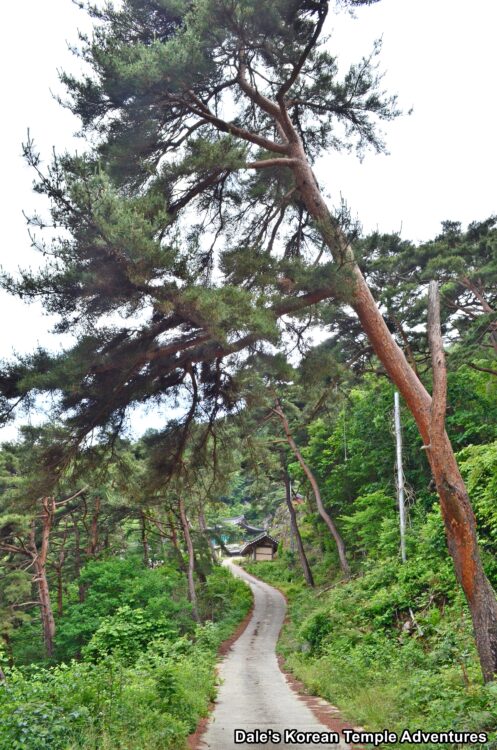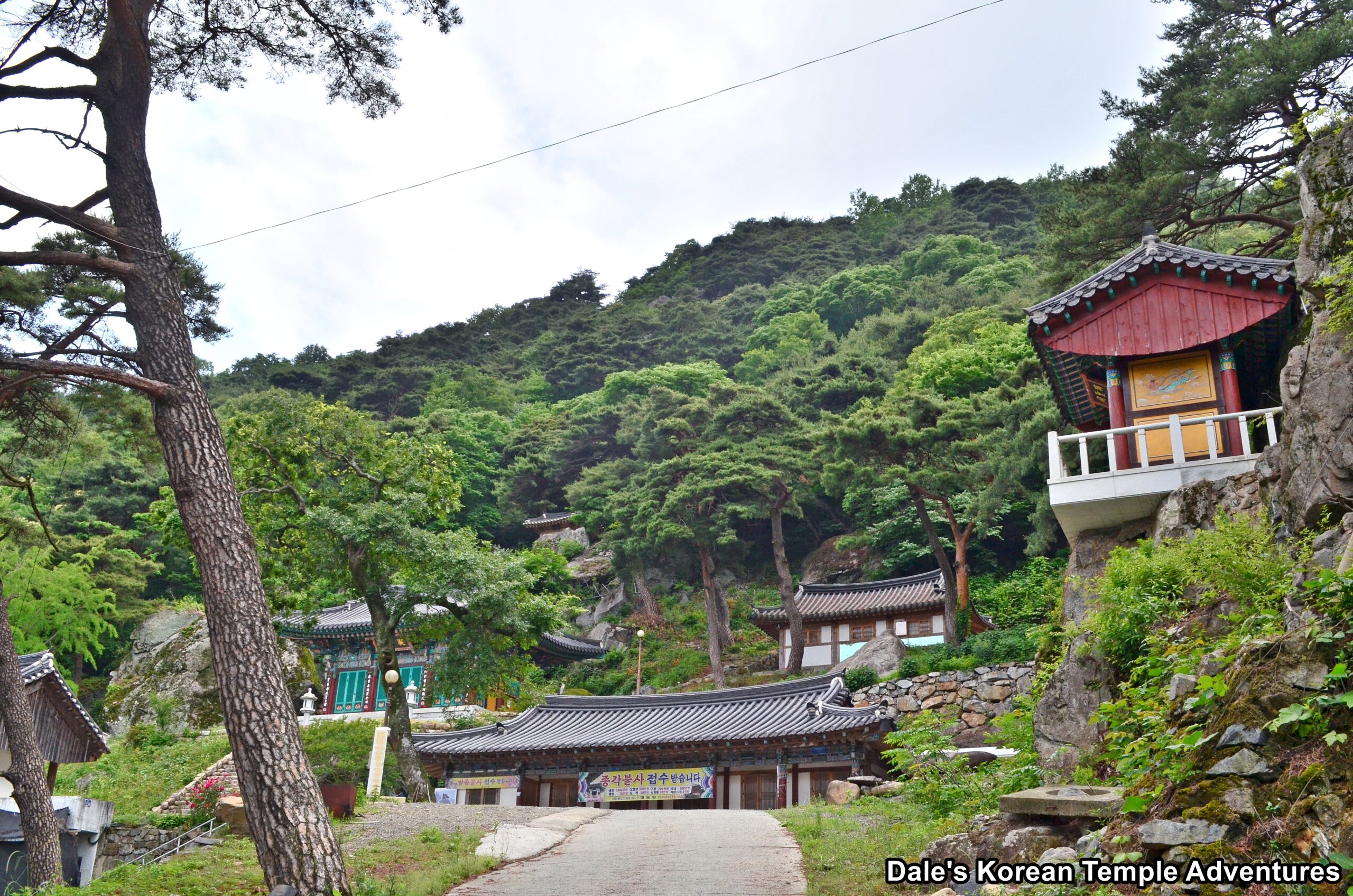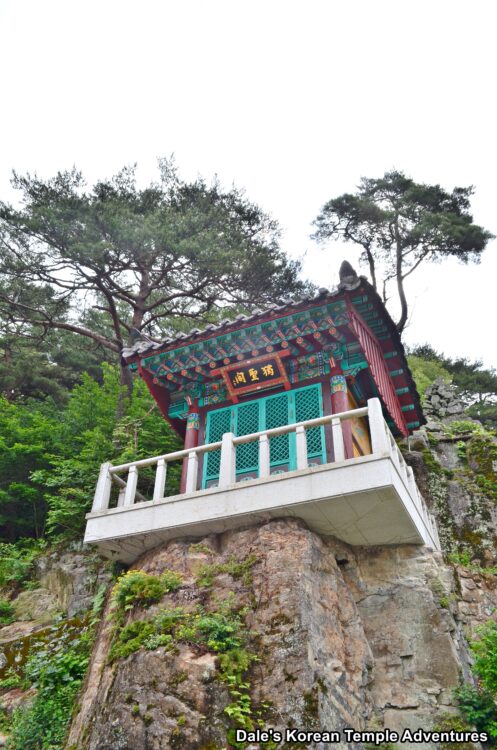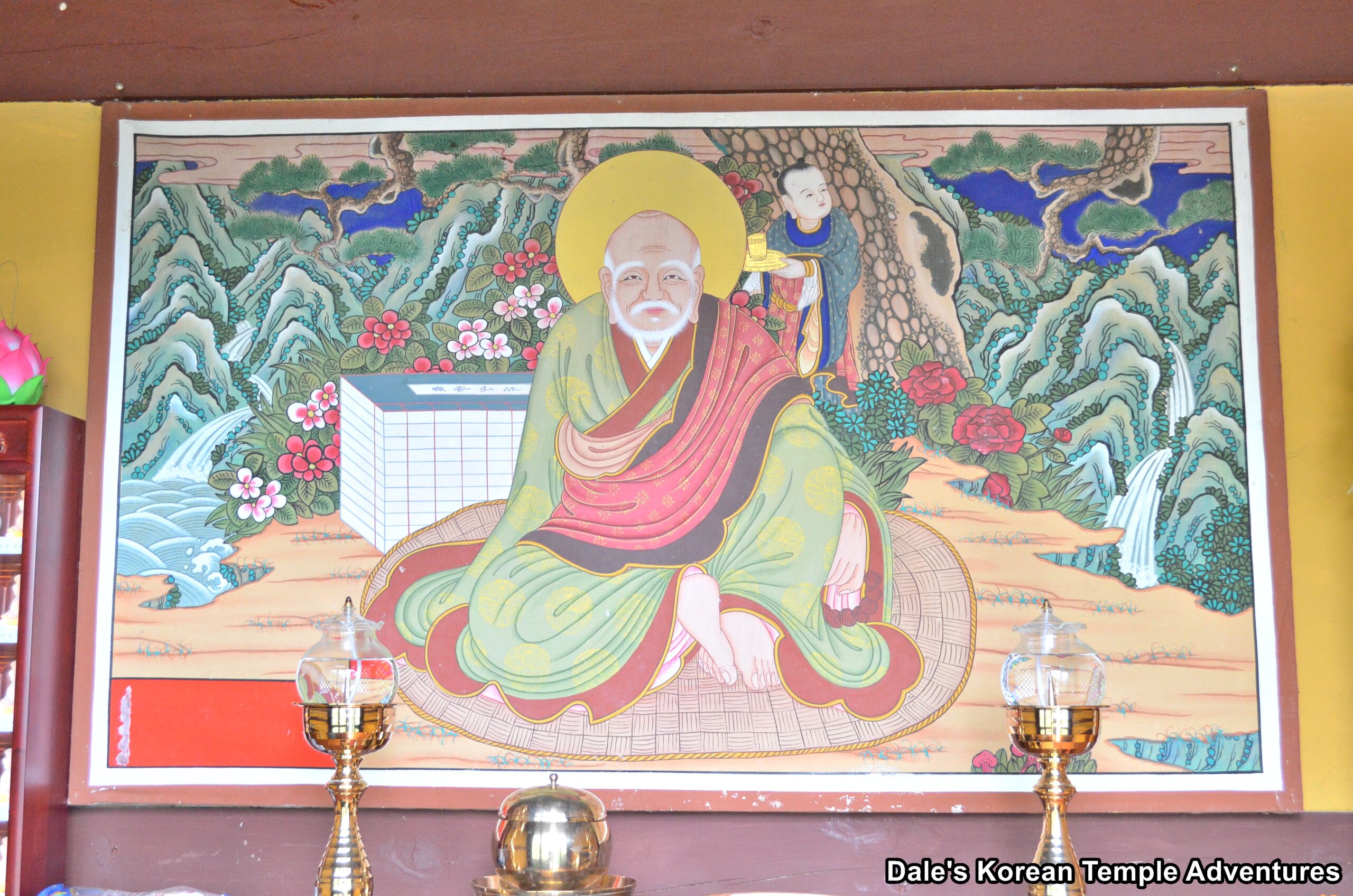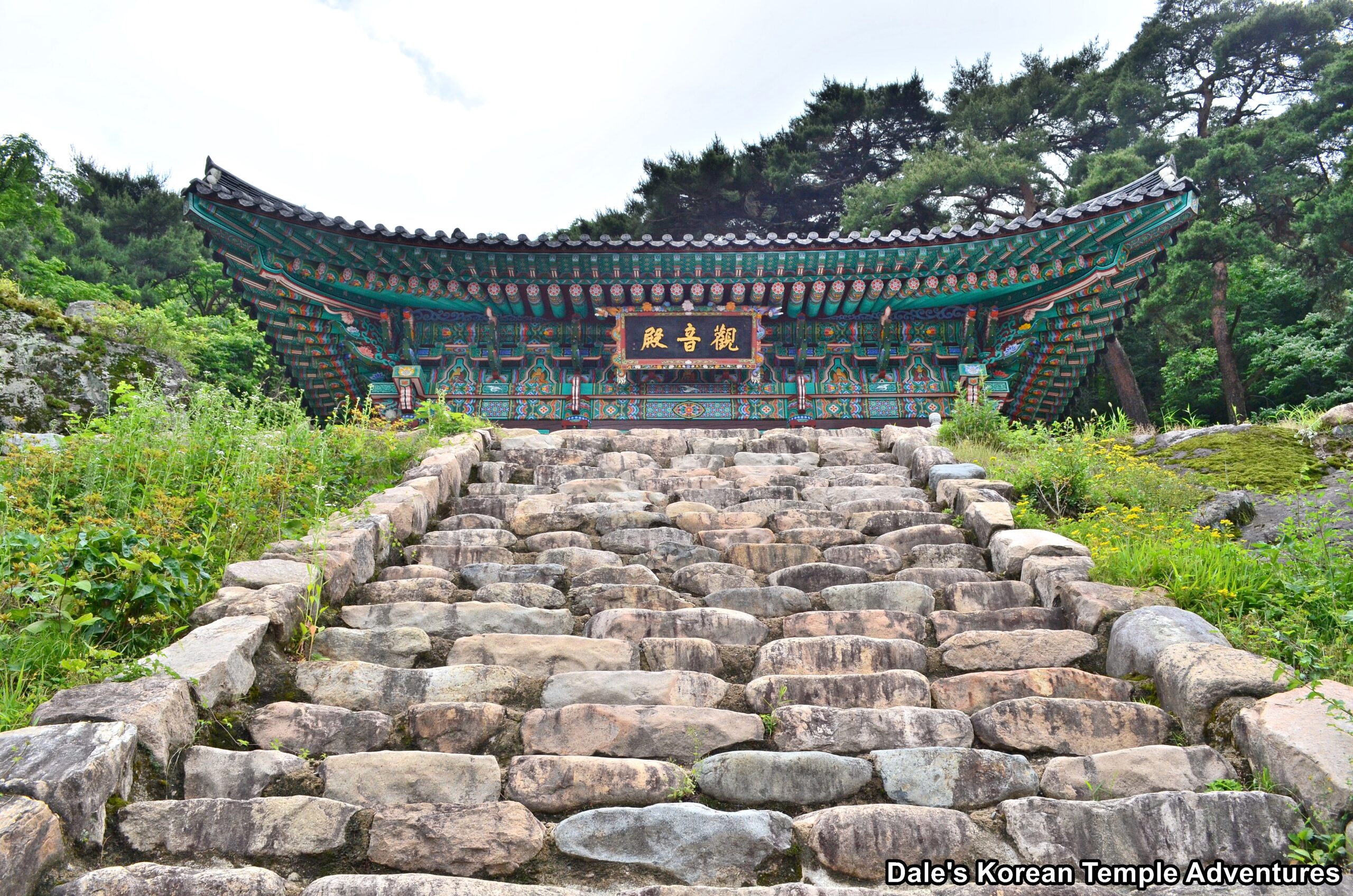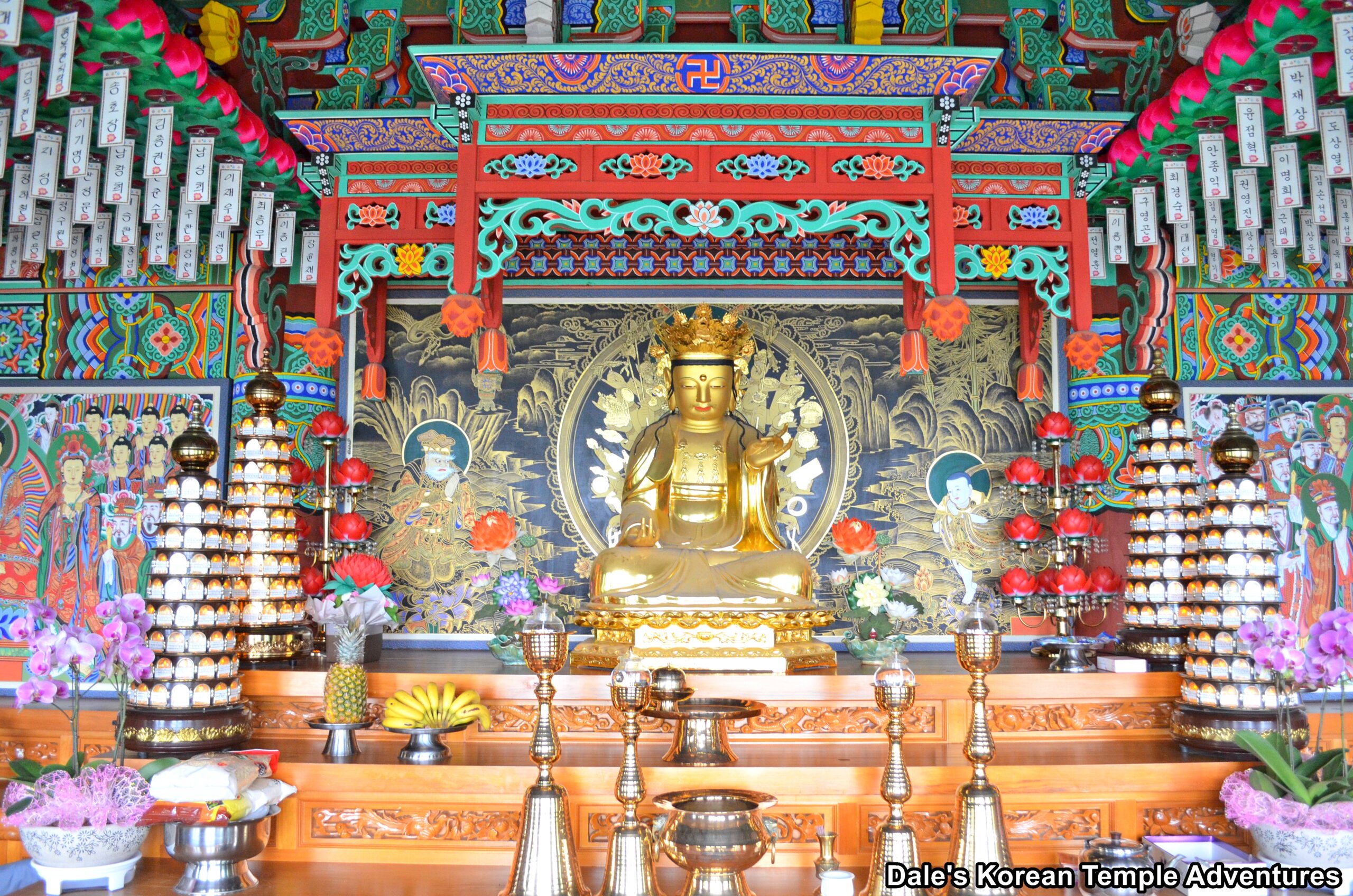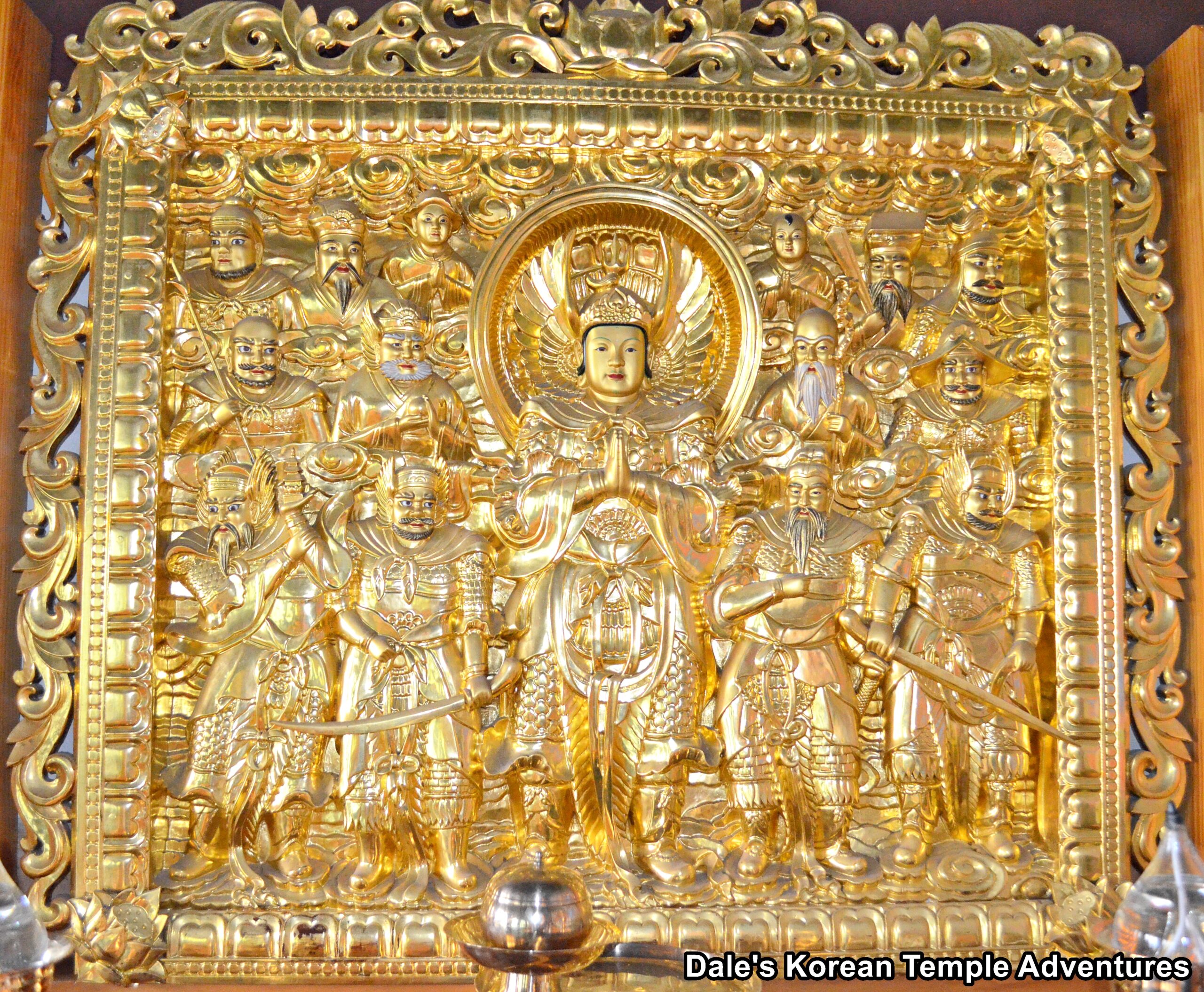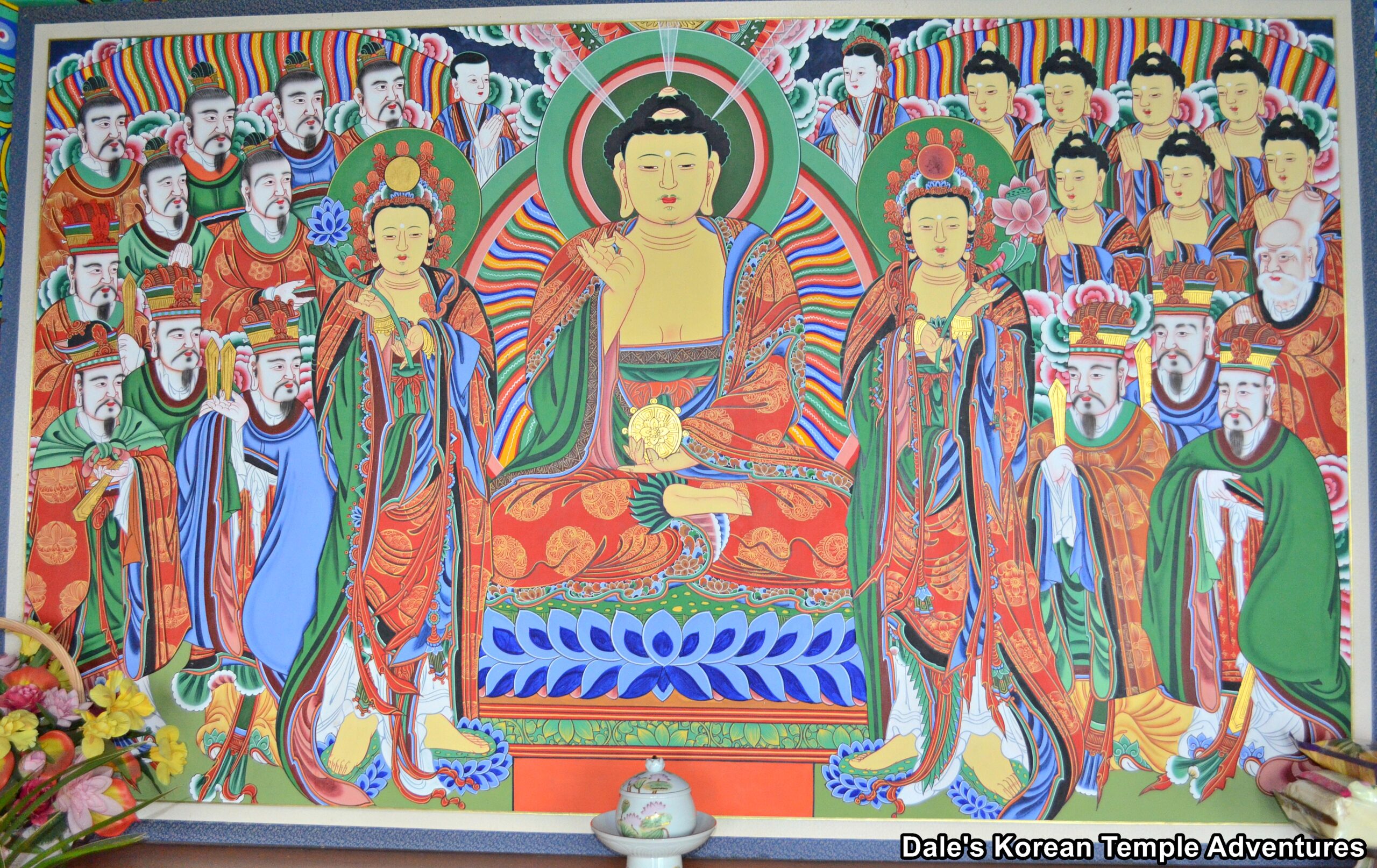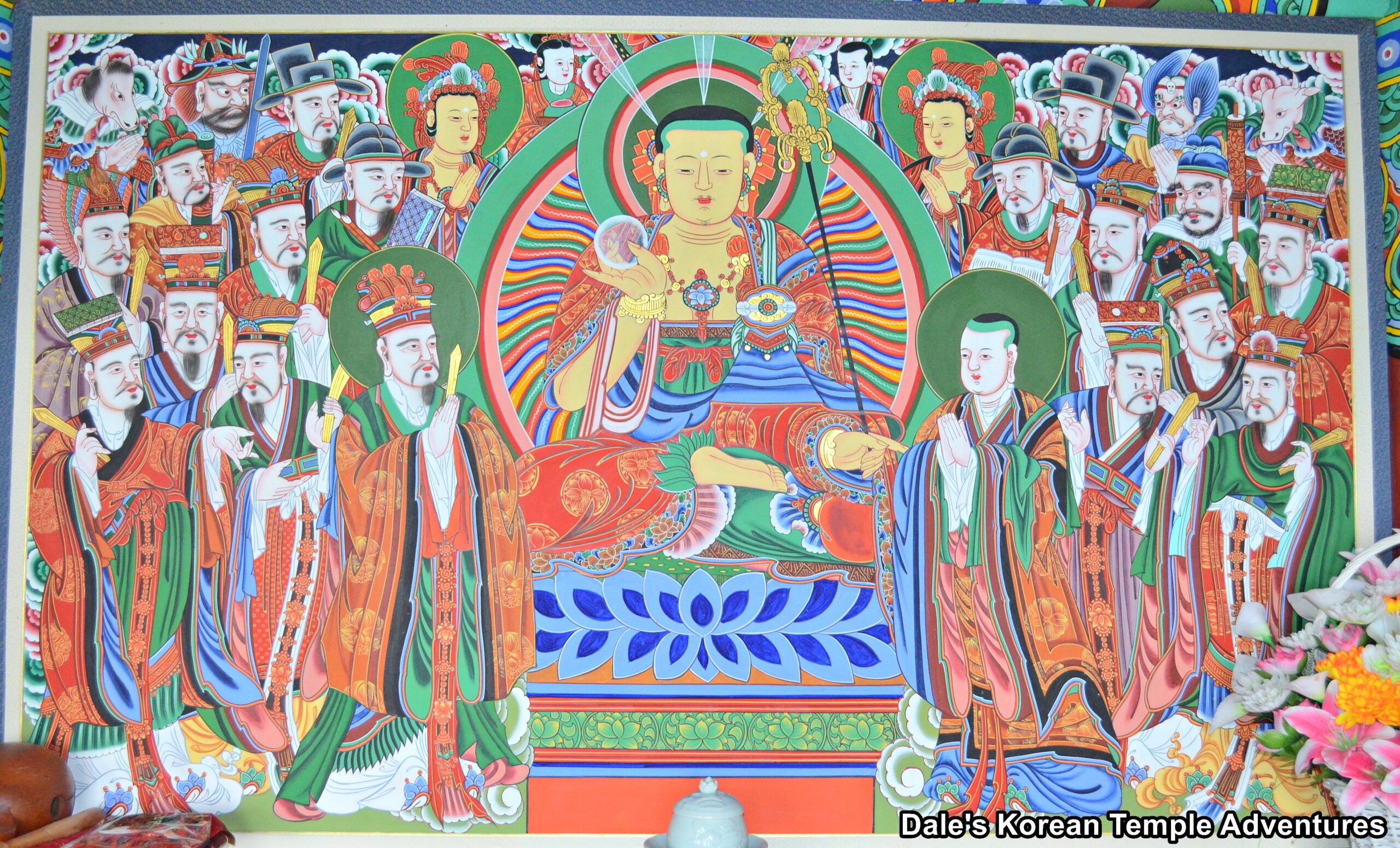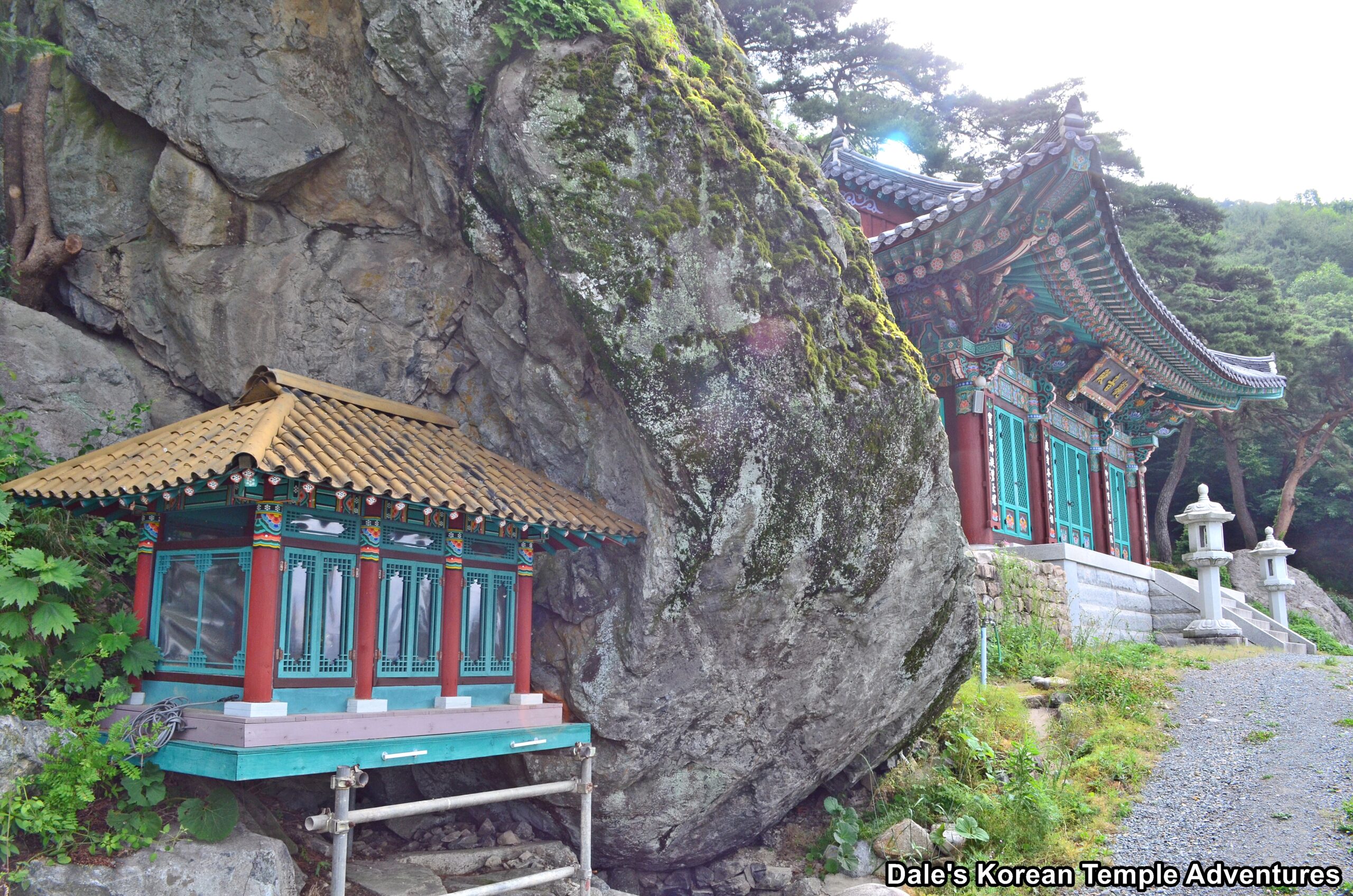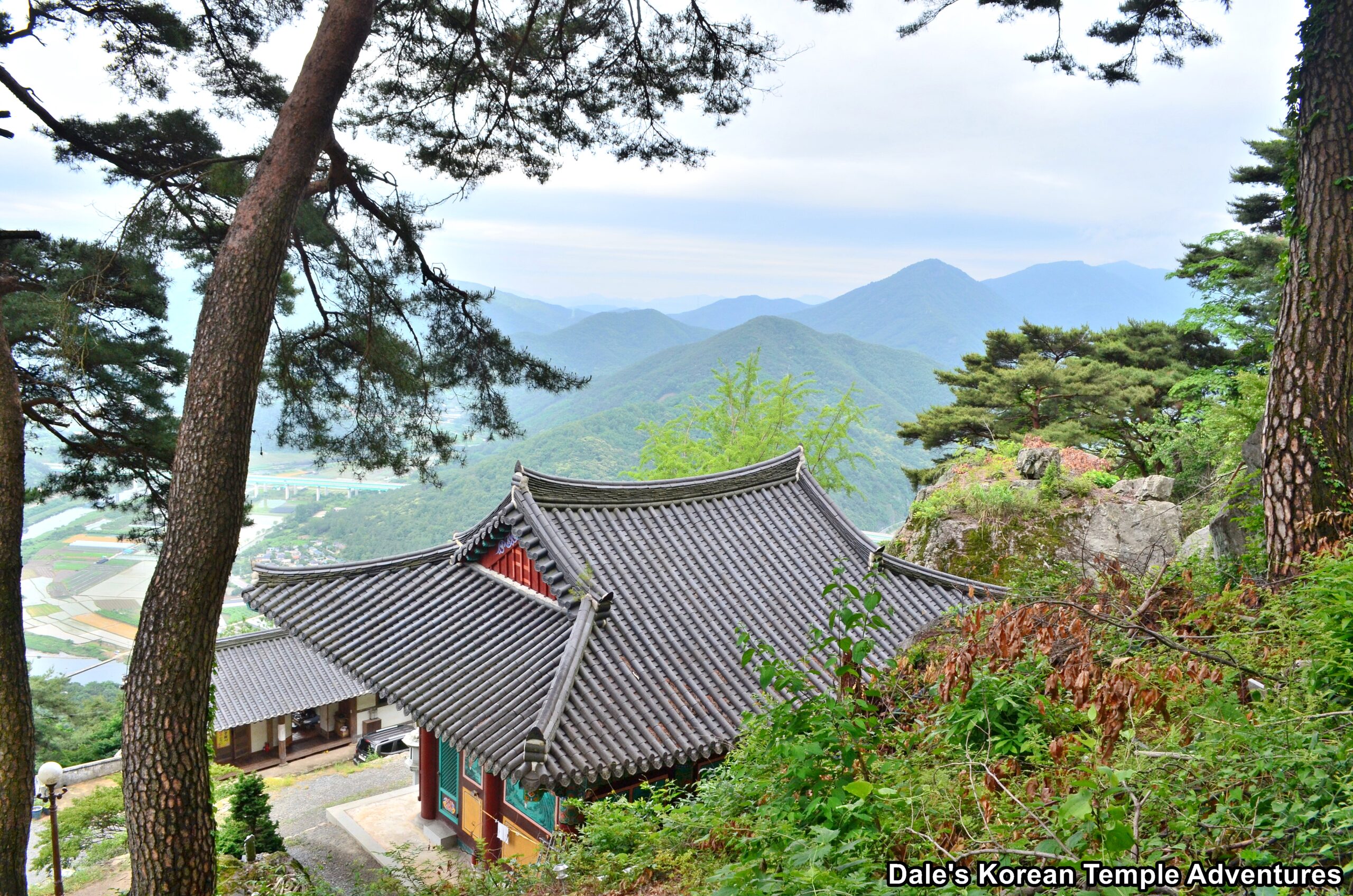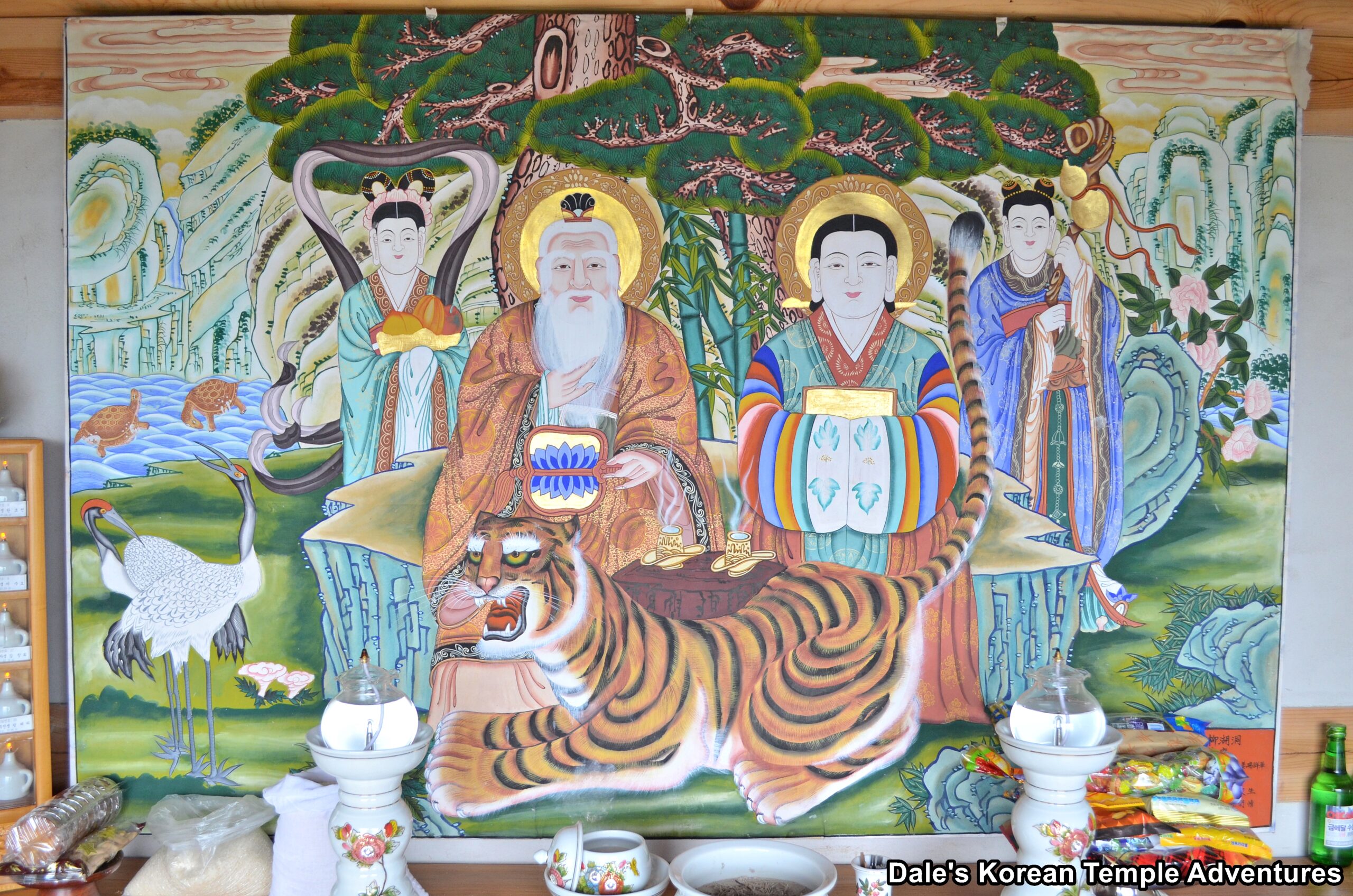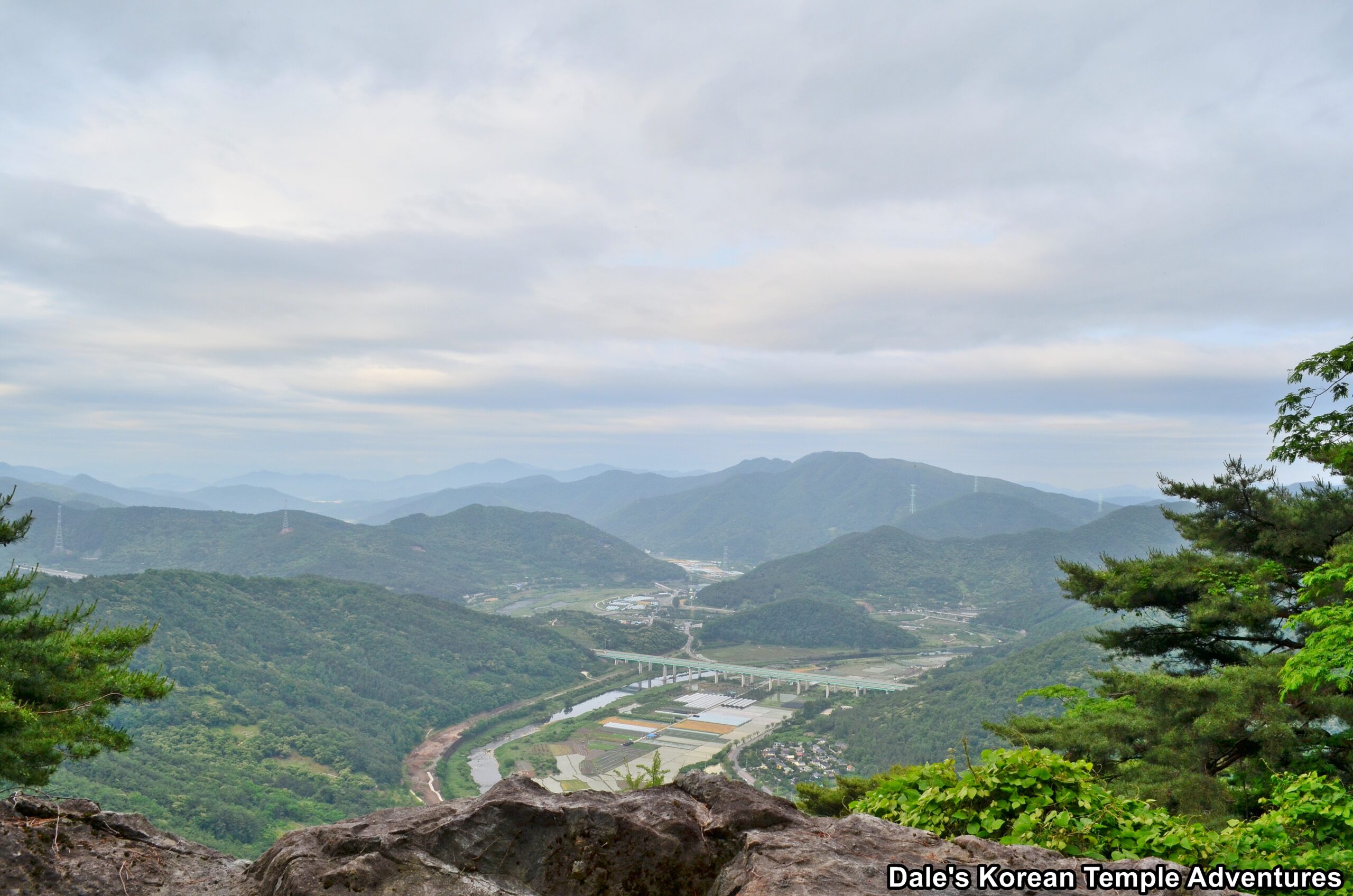Daeunam Hermitage – 대운암 (Cheongdo, Gyeongsangbuk-do)
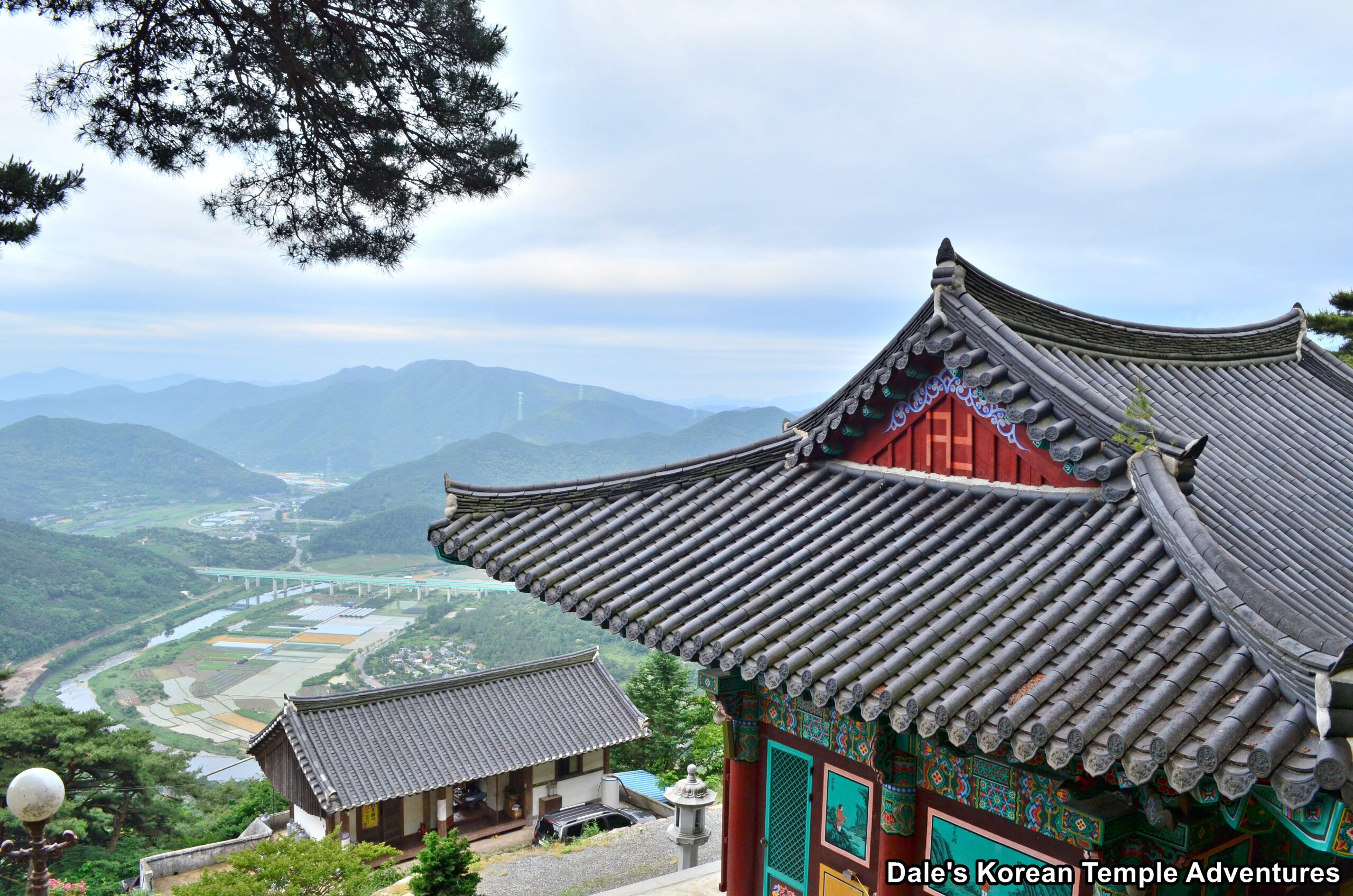
Hermitage History
Daeunam Hermitage is located on the southern part of the Mt. Yonggaksan (696.8 m) mountain range on Mt. Oryesan in northeastern Cheongdo, Gyeongsangbuk-do. Daeunam Hermitage was first established in 1868 near the end of the Joseon Dynasty (1392-1910). Daeunam Hermitage was eventually destroyed in the 1900s by fire, and it would be rebuilt by Buam-seonsa in 1930. More recently, Daeunam Hermitage has grown in size with the additions of the Sanshin-gak Hall in 1996, the dorms in 1998, and the Gwaneum-jeon Hall in 2000.
Daeunam Hermitage is also home to Gyeongsangbuk-do Cultural Property Material #309, which is the Seated Wooden Gwaneum-bosal Statue and Accompanying Relics of Daeunam Hermitage.
Hermitage Layout
You first approach Daeunam Hermitage up a long valley and a road that winds its way up the mountainside. The road runs for about four kilometres, and it allows for some pretty remarkable views of rural Cheongdo down below.
When you finally crest the mountain, you’ll be welcomed by the monks’ dorms that lay in front of you. Slightly to the right, and placed rather precariously on the mountain’s face, is the Dokseong-gak Hall. In this shaman shrine hall is a colourful, solitary image dedicated to Dokseong (The Lonely Saint).
Slightly to the left of these two buildings, but still in the same area, is another building. This building is the administrative office at the hermitage, which has an amazing view of the valley down below. If you’re lucky enough, a monk will invite you in for a cup of tea.
Directly behind the administrative office, and up a steep and uneven set of stairs, is the Gwaneum-jeon Hall. The exterior walls to the main hall are adorned with green-tinged Shimu-do (Ox-Herding Murals). As for the interior, you’ll find a solitary image of Gwanseeum-bosal (The Bodhisattva of Compassion) on the main altar. This is the Seated Wooden Gwaneum-bosal Statue and Accompanying Relics of Daeunam Hermitage. According to a scroll discovered inside the image of Gwanseeum-bosal, this wooden image of the Bodhisattva of Compassion was first enshrined at Banryongsa Temple in 1654. It was moved to Daeunam Hermitage in 1930 when Daeunam Hermitage was rebuilt. As for the relics inside the image of Gwanseeum-bosal, a collection of sutras from woodblocks carved during the early Joseon Dynasty (1392-1910) were discovered. The image of Gwanseeum-bosal rests under a red canopy lined with blue painted trim up near the top of the canopy. In the centre of this wavy blue cloud-like designs is a manja (swastika) symbol in the front centre. Gwanseeum-bosal is backed by a beautiful black mural of herself. To the right of the main altar, on the other hand, is a mural dedicated to Jijang-bosal (The Bodhisattva of the Afterlife). And to the left of the main altar appears a mural dedicated to Chilseong (The Seven Stars). Next to this image of Chilseong hangs a golden relief of the Shinjung Taenghwa (Guardian Mural). And the final mural housed inside the Gwaneum-jeon Hall is a mural dedicated to the founding monk at Daeunam Hermitage.
To the left of the Gwaneum-jeon Hall, but still in the upper courtyard, is a miniature main hall. Yep, you heard me right. It’s a Barbie house for Buddhism. Inside are three diminutive Buddhist statues, as well. Not sure of its meaning, but it definitely surprised me. As you walk in this direction, you’ll also notice another hall with an intense yellow tiger painted on it. It appears to have once been the Sanshin-gak Hall that’s potentially being converted. It’s also from this former shaman shrine hall that you get some amazing views of Cheongdo in the valley below.
So if the old Sanshin-gak Hall is being converted, where is the new one? Well, squeezed between the Gwaneum-jeon Hall and a row of monks’ dorms is a stone staircase that leads up towards the peak of the mountain. Crowning the hermitage grounds is the newly built Sanshin-gak Hall. Stepping inside the Sanshin-gak Hall, you’ll find an amazing male and female Sanshin (Mountain Spirit) mural. This pair is quite rare in a Sanshin mural, so enjoy it as well as the view that the two get to enjoy.
How To Get There
From the Cheongdo Intercity Bus Terminal, you’ll need to take a taxi to get to Daeunam Hermitage. It’s 16 km, or 30 minutes, and it’ll cost you around 15,000 won (one way).
Overall Rating: 6/10
The amazing views are one of the main highlights to be found at Daeunam Hermitage. In fact, the views are second only to a handful of other hermitages in Korea. Adding to the hermitage’s natural beauty is the historical Gwanseeum-bosal statue inside the Gwaneum-jeon Hall, as well as the male and female Sanshin (Mountain Spirit) in the Sanshin-gak Hall. The hermitage is definitely a quaint little getaway from the more popular temples and hermitages in Korea. So enjoy the tranquility.
